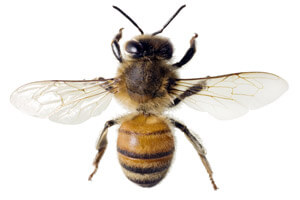
Spring is the busiest time of the beekeeping year. Anything you can do to improve your work productivity and increase colony efficiency is an absolute necessity. Every experienced beekeeper has an assortment of tricks and shortcuts acquired through years of practice and experience. Unfortunately a large portion of this information never makes it into print form. Consequently, many new beekeepers are left to fend for themselves through the trial and error process. With all of the obstacles facing beekeepers today, the trial and error process is somewhat impractical, and often financially prohibitive. While there is no all inclusive management advice, most operational strategies or tactics are easily adapted to fit the local circumstance. With that thought in mind, here are five suggestions.
Use Nuc Boxes
Nucleus colonies have been a staple of the beekeeping industry for the better part of the last century. Versatile, easy-to-move and manage, nucs offer the beekeeper a means to dramatically improve overall colony management efficiency. Yet, far too many beekeepers regulate nucs to the back burner. They fail to realize the multitude of advantages that nucs have to offer.
For starters, nucs are the ideal cold weather abode. Start your packages or early season splits in a five-frame nuc box. Once it is queenright the new colony will literally explode. The secret is heat retention. Use a solid bottom and keep the entrance reduced as needed. Once the small colony is in need of additional room, add space vertically in the form of a second five-frame box. If there is incoming nectar, don’t hesitate to use foundation in the second box. Nucs are ideal comb production units. Again, the secret is heat control. The narrow abode forces escaping heat upwards which in turn facilitates comb production.
Nucs are also ideal for queen rearing purposes. Whether you’re grafting or using the notching technique, nucs are far easier to set up and manage than standard ten-frame equipment. Queen mating nucs are traditional, although the size and style can vary tremendously. I find it much easier to locate queens on small frames so my mating nucs are all in medium depth equipment. However, I routinely mix medium and deep boxes when I need additional brood and bees for expansion purposes. For example, I’ll add a deep box on top of a medium that has been left to build. Once the deep is full of brood and young adults, I’ll split it off and requeen one or both halves depending on need. The number of options is almost unlimited, and that illustrates the true versatility of using nuc boxes.
Locally the main honey flow generally ends by the tenth of July, occasionally somewhat earlier. While heat retention and rapid buildup are the primary reasons for using nuc boxes in the spring, summer splits are an entirely different matter. In summer nuc boxes are used primarily to prevent robbing and for ease of movement. In most years the threat of robbing requires that mid-season splits be moved away from full sized production colonies. The use of nuc boxes greatly facilitates that move. Take care to provision summer splits with an adequate adult population. Providing just enough adults to keep the brood warm can easily create the potential for robbing. Once started, robbing of small colonies is almost impossible to stop. Keep the entrance reduced accordingly, and again shake in enough adult bees to provide a small field and guard force. Because of the absence of a flow, drawn comb becomes a necessity once the summer split requires larger quarters —unless you’re willing to feed like mad. In that case, add space vertically to facilitate comb production. Otherwise, I generally transfer the five-frame colony into the center of a ten-frame hive body and add drawn comb to the outsides. Ideally, a fair number of those added combs are filled with honey.
Spring arrives late in this territory, so I prefer to overwinter in standard ten-frame boxes. Sometime in mid to late August, well ahead of the fall honey flow, I start to transfer multiple story five-frame colonies into standard equipment. Nucs on deep frames are transferred and winter as single hive body colonies. Nucs on 6 5/8th depth frames are transferred into double-story medium depth boxes. The idea is to allow the transferred colonies time to reorganize their broodnest prior to any fall flow. If Mother Nature doesn’t provide the necessary winter stores, it’s a simple matter to augment with heavy syrup, or to add frames or supers of honey saved specifically for that purpose.
Set up a Queen Bank
If you have ever received a spring queen shipment early or during an extended period of bad weather, I feel your pain. This scenario becomes almost unavoidable once you’ve kept bees for more than a year or two. For years I kept caged queens with attendants in shoe boxes in the linen closet. Watered them twice a day and fretted as the attendants gradually died off. On more than one occasion I’ve opened up colonies during very inclement weather solely to replace dead queen cage attendants. I’ve had similar experiences with battery boxes, trying to keep everything together until the queens could be put into the receiving colonies. I don’t remember exactly which straw broke the camel’s back, but I finally decided things had to change.
So, I decided to experiment by making up some queen banks. I have some homemade four-frame nuc boxes fitted with deep rimmed inner covers and telescoping outer covers. It was a simple matter to make up holding frames for each of the various style queen cages. The queen banks were made up using …


